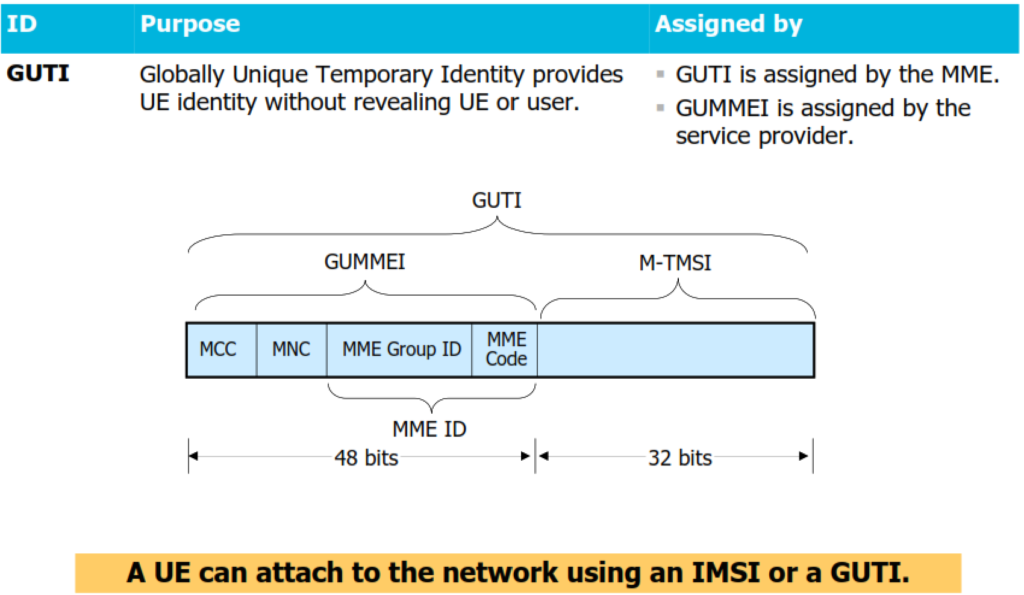The Globally Unique Temporary Identity (GUTI) is an identifier in LTE networks, designed to provide temporary identification for a User Equipment (UE) without revealing the user’s permanent identity. This mechanism enhances both privacy and security within the network.
Components of GUTI.
The GUTI is composed of two main elements:
- Globally Unique MME Identifier (GUMMEI)
- GUMMEI identifies the MME (Mobility Management Entity) that assigned the GUTI.
- The structure of GUMMEI includes the Mobile Country Code (MCC), Mobile Network Code (MNC), and the MME Identifier (MMEI).
- M-TMSI (Mobility Management Temporary Mobile Subscriber Identity)
- M-TMSI is a temporary identifier that uniquely identifies a UE within the MME that allocated the GUTI.

Functionality and Use Cases.
The primary function of the GUTI is to provide a unique and temporary identifier for the UE, which is used for mobility management and to maintain the UE’s privacy. The GUTI is assigned to a UE when it attaches to the network and is used for subsequent network interactions, such as paging and location updates.
Key scenarios involving GUTI:
- Initial Attach: When a UE initially connects to the LTE network, it is assigned a GUTI by the MME. This GUTI is then used for all signaling procedures to protect the permanent identity of the user.
- Mobility Management: As the UE moves across different cells or tracking areas, the GUTI helps maintain continuous network connectivity and seamless handovers.
- Paging: The network uses the GUTI to page the UE when there is incoming data or a call, without revealing the permanent identity of the user.
GUTI Validity and Invalidity.
The GUTI remains valid as long as the UE is in a registered state with the network. However, it becomes invalid in the following situations:
- EMM-Deregistered State: When the UE transitions to an EMM-deregistered state, for instance, if the UE is powered off or the network connection is explicitly terminated.
- Context Detachment: If the UE’s EMM context is detached, the GUTI is also considered invalid. This can occur during scenarios such as relocation to another MME or prolonged inactivity.
Security and Privacy Benefits.
The use of GUTI significantly enhances the security and privacy of users within LTE networks. By using a temporary identifier instead of a permanent one, the network reduces the risk of tracking and unauthorized interception of user data. The GUTI helps obscure the user’s true identity during routine network operations, contributing to a more secure communication environment.
Conclusion.
The GUTI plays a crucial role in the LTE network by providing a secure and temporary identifier for UEs. Its structure, which includes the GUMMEI and M-TMSI, ensures that the UE can be uniquely identified without compromising the user’s permanent identity. The GUTI’s ability to maintain user privacy and support efficient mobility management makes it an essential element in modern cellular networks.